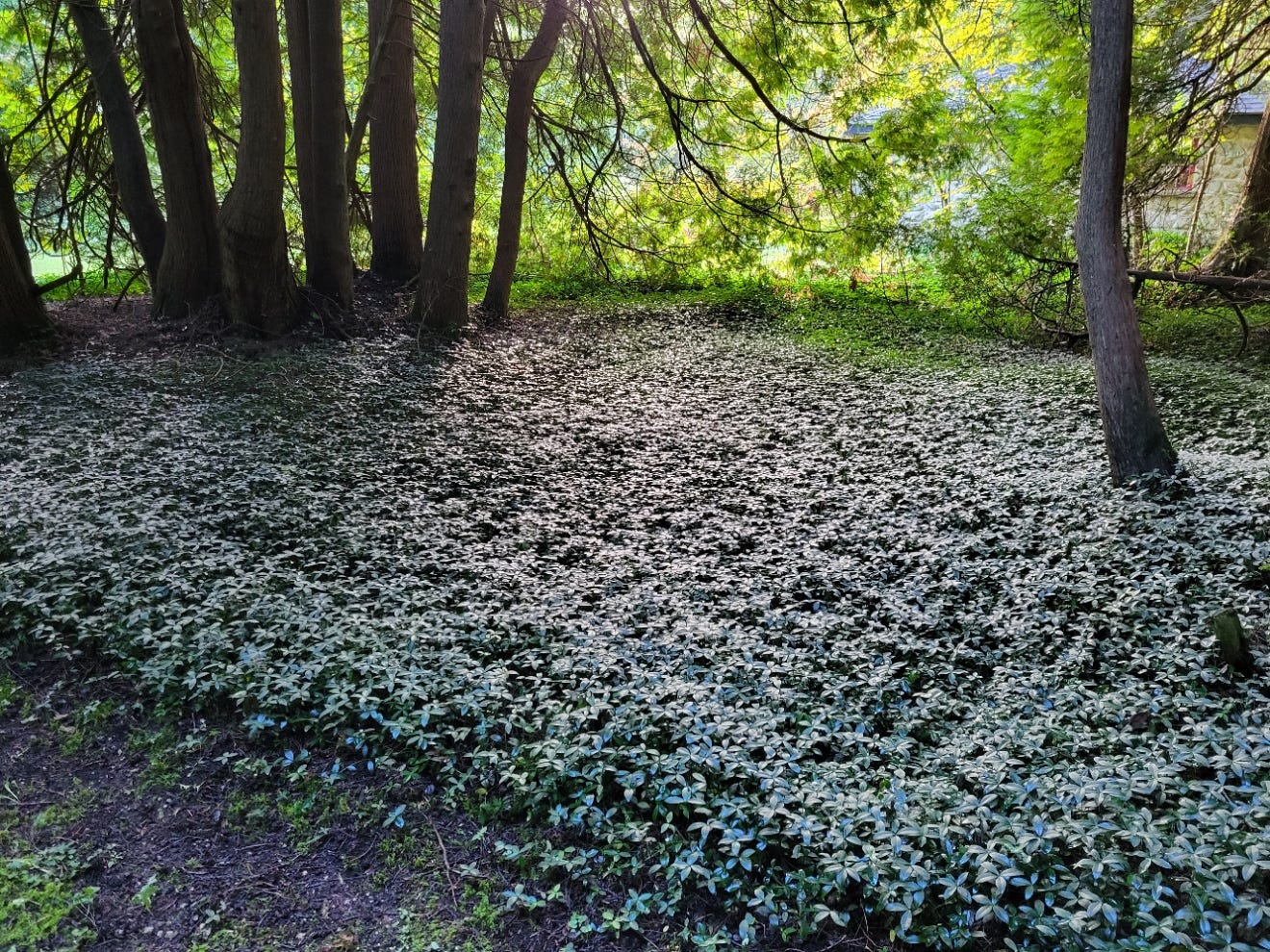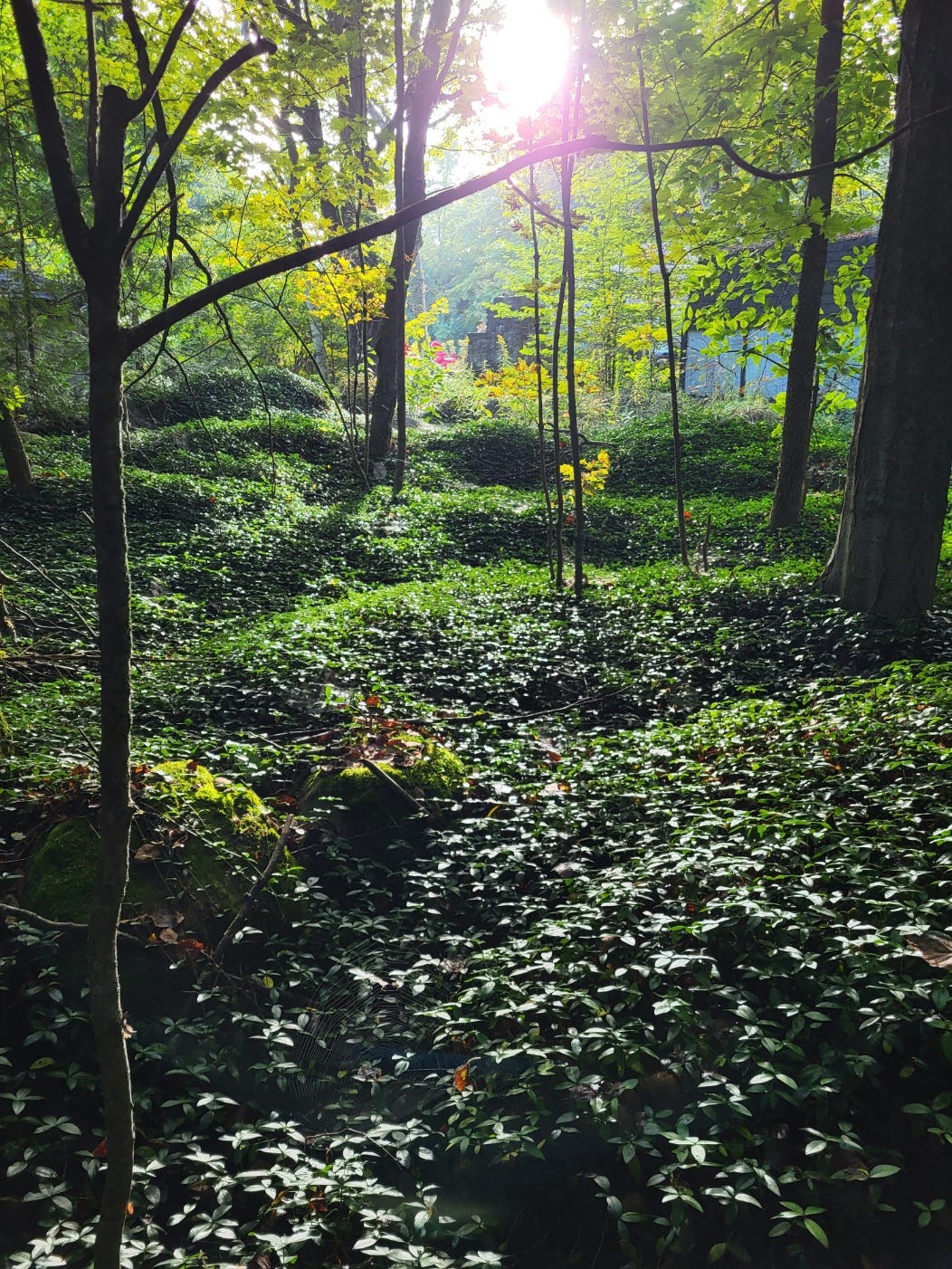Cobblestone & Periwinkle: 130-Year-Old Cottage Highlights Legacy of Invasive Plants
Master Gardener Jennifer Deeks reflects on how the overgrown gardens of a Bruce Peninsula cottage reflect the lasting impact of invasive plants on the environment.
COMMUNITY CONTRIBUTION
Just south of Lion’s Head, about halfway up the Bruce Peninsula, is a cobblestone cottage in the woods. The listing says it’s about 130 years old, and it is currently a rental—to people like us looking for some reprieve from our daily grind—but at that advanced age, it can be assumed that at some point in its lifetime, it was a proper home.
This is evident in the overgrown, semi-feral gardens surrounding the enormous flagstone patio. Clearly, these were once cottage-style gardens planted with several traditional European introductions.
Ancient, gnarled lilacs grow alongside beech and cedar. The occasional thorny rose cane rises through the goutweed and peonies dotted among the Canada goldenrod. Sweetpea vines wind their way through the calico asters, and perennial geraniums are creeping their way onto the patio.
A smooth hydrangea flops under the weight of its oversized blooms, and autumn crocus bloom in magenta and pink shades. No one is maintaining these cultivated species, but here they are in the middle of the woods.
It is such an idyllic location. The stone gateway features carved statues that are so weather-worn and moss-covered that their original forms can no longer be identified. The dappled sun illuminates a clearing with a thick carpet of verdant green moss that feels like walking on a pillow.
Sadly, a short distance up the laneway reveals how periwinkle has destroyed the natural forest floor for hundreds of meters around the cottage clearing. Everything has lost the war against the dense roots of the invasive plant as it marches outward from the little stone building.
Beyond the periwinkle carpet are numerous mosses, earth star fungi, and several interesting varieties of fern that the peninsula is known for – a reminder of what the forest should be growing.
These gardens remind us of how we leave a trace long after we are gone. We assume that if left untended, they simply return to the wildness of what they were. Instead, we leave permanent deep marks on the landscape.
The tallgrass prairies that used to dominate the landscape of Southern Ontario only exist in tiny corners of the province. The open meadows and fields that most of us believe to be native are almost entirely a mix of introduced plants and grasses brought here by early settlers to feed livestock.
In our quest to lead more ecologically sustainable lives, some choices are difficult and costly—for example, giving up our vehicle. But what do we choose to plant in our gardens? That is a choice that any of us can make with almost no disruption to our lifestyles.
We can plant native wildflowers, shrubs, and other well-behaved garden plants that don’t leave the garden to overrun wild spaces. Or we can continue to propagate, sell, and purchase plants, either through ignorance or apathy, that are causing environmental damage.
Thank you to sponsors of The Owen Sound Current Writers’ Fund, who make these community contributions possible. Contributions from the community do not necessarily reflect the opinions or beliefs of The Owen Sound Current and its editor or publisher.





